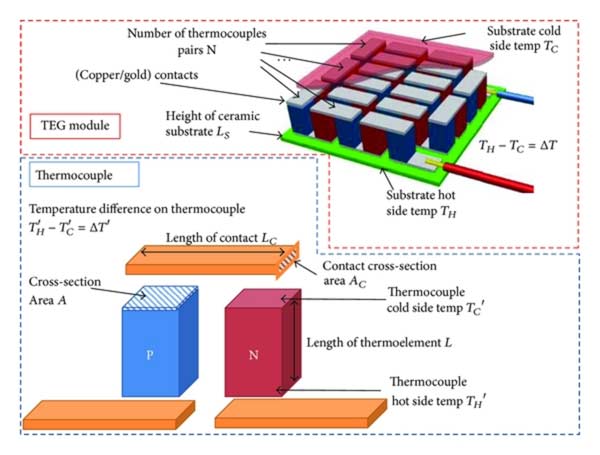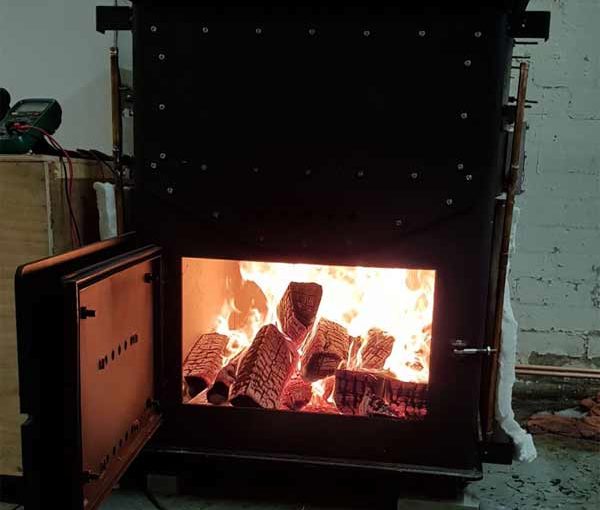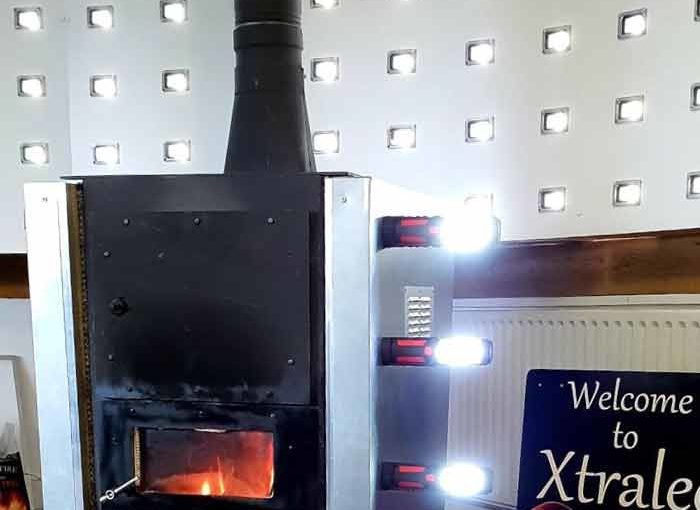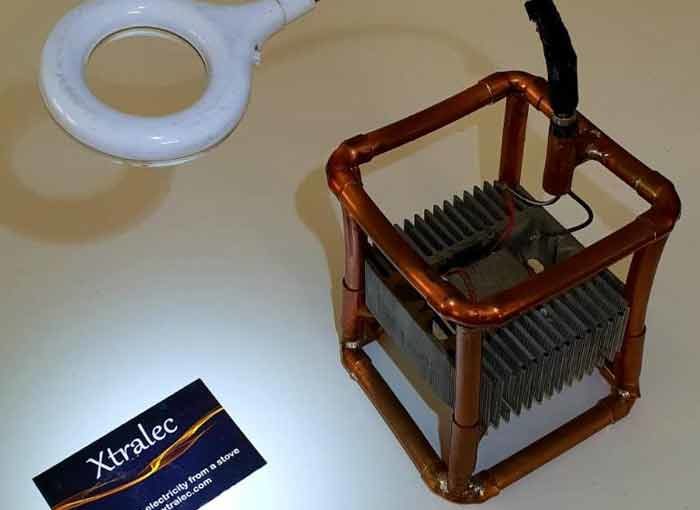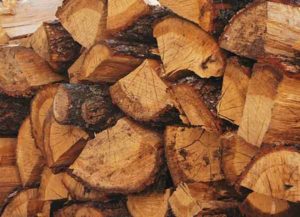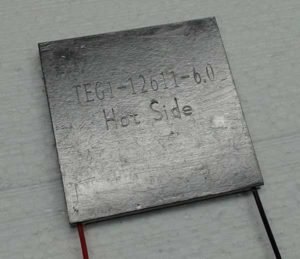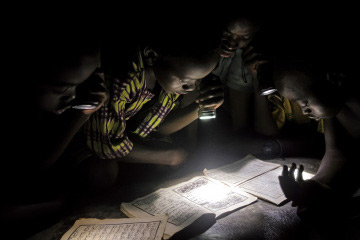Author: Xadmin
Thermo Electrics
Once used in outer space with a technology so expensive that until a short few years ago the TEG could have never been used in our every day lives.

The Teg
How the TEG works. We liken its operation to a thunder storm. When a hot cloud meets a cold cloud a bolt of lightening erupts (electricity) with Thermo electrics when a heat is placed on one side of a TEG plate and cold on the other an electrical current erupts ( electricity).
Thermo Electricity invented in the mid 1800s, used in space technology during the 1970s is now in every day use. Until recently only a very small amount of electricity could be produced by a Thermo electric (TEG) plate. In order to create a significant amount of electricity hundreds of these plates had to be coupled together. The cost of production made it impossible to consider use outside specific areas with enormous amounts of available funding.
During recent years projects have started to emerge. Mostly projects requiring small amounts of electricity, perhaps only enough to charge a mobile phone.
Our story, from acorns to oak trees really has happened.
Development has taken another major turn. This time, rather than charge a mobile phone, Xtralec has seen heat driven generators capable of producing enough electricity to power a remote off grid village giving everyone a chance of a better future.
Could This Be History In The Making?
Community cooker for emerging markets.
Development is under way to produce a community cooker capable of lighting up an entire village while at the same time giving cooking and hot water facilities to a small community.
This cooker, weighing in at almost one ton, is under going rigorous tests. With more than 30.000 villages in India without electricity, could this be the future.
60 million people in Africa live without electricity. 1.1 billion people have no access to electric light. 3.5 billion people cook and heat with wood.
Disasters rage around the globe, earth quakes, tsunami’s, tornados and hurricanes wreak devastation. The first and most important requirement is electricity. Emergency services being able to see 24 hours per day, boiled water for clean water drinking and heat in cold climates must all be addressed. This appliance could save lives anywhere. Powered by fuel all around us makes this a real contender in a disaster. Trials are under way using any dry fuel, wood, grass, leaves, straw, in fact anything that will burn can make electricity.
This rugged and robust multi fuel power generating stove undergoing tests at our facility may be the answer!
Cooking, heating, hot water and electricity, all from the same appliance, is this everyone’s dream?
This small wood burning cooker (pic 1) has been converted to not only produce electricity, but also run a small heating system, produce hot water for washing and can also cook dinner. With a cooking hob and a small oven this device may be the future of powering a home.
After developing electricity generating wood burning cookers for many years, it is now possible to power one hundred and twenty flood lights while dinner is cooking!

Pic 1. early prototype cooker

Pic 2. Another prototype stove.
The Oak Tree
Using the same principal as the electric light made from plumbing parts, an aluminium heat sink and two very small TEG plates. By multiplying the TEG plates and changing the heat sink we have developed this micro power station. With the heat of the fire box on one side of the TEG plates, the cooling of a heat sink on the other side, adding electronics and circuitry to the generator has increased the electrical power output very significantly. This micro power station, the size of a cooker in most kitchens is able to power several hundred flood lights.
With many years of research and development we now have a silent running generator with no moving parts capable of putting a remote location onto its own power grid.
Consider its potential, living in the wilderness with no access to conventional fuel to power an electricity generator. This power station so silent in its operation has nothing to maintain, no servicing necessary and no need for part replacement. With the added value of being able to run on any available fuel including wood, grass, leaves, in fact any burning material makes this generator a one of a kind. Perhaps the future really is renewable.
From Acorns To Oak Trees
This electric light made from plumbing parts, an aluminium heat sink and two very small TEG plates, produces electricity by placing a T light candle under the base, the heat from the candle on one side of the TEG and the cool of the heat sink on the other, creates an electrical charge.
This electrical charge multiplies the light of the flame by more than 20 times into electrical light. The technology behind this light multiplied many times over can produce enough electricity to become very significant in every day life.
Calorific Value of fuel
The intensity of the heat output (calorific value) from burning different materials varies. For instance, different species of wood burn at different temperatures changing the calorific value or heat output.
Although both hardwoods, Ash wood burns at a much higher temperature than Alder wood.
Straw has a lesser calorific value than wood if compressed into a briquette. Coal on the other hand has an increased calorific value and in some cases can burn with a very intense heat. Over the years, a blacksmith chooses coal as a burning fuel because it burns very hot and will emit heat for much longer than wood.
The drier the fuel, the better the calorific value. Fuel should ideally have less than 20% humidity (water) content.
The Technology Behind The Micro Power Station
In the mid 19th century, a gentleman by the name of Jean Charles Athanase Peltier invented a form of electrical production.
The TEG or thermoelectric generator, produced in different sizes, is often used in Space technology, powering satellites etc. Some plates are only 3mm thick and 50x50mm in diameter and these tiny devices, subjected to heat on one side and cold on the other can produce a small amount of electricity. These tiny plates are made up of dissimilar metals.
When subjected to heat and cold they produce an electrical current. We liken this to a thunder storm. When a hot cloud meets a cold cloud a bolt of lightening erupts (electricity).
The plates can be connected together in order to produce more electricity. The bigger the temperature difference the more powerful the TEG becomes.
The difference in the two temperatures is known as the delta T. For instance, if the hot side is one hundred degrees centigrade and the cold side is ten degrees centigrade then the delta T is 90c. The greater the delta T, the more electricity is produced.
Being able to control and balance the two temperatures on a plate only 3mm thick is the secret of success.
The cold side, if too cold, stops the heat from striking the plate. In the same way, if the plate is too hot it can stop the cold side striking. This is where technology kicks in.
Electronics help to balance the two temperatures. Xtralec have developed a circuit board capable of controlling both the hot and the cold sides of the TEG, when placed into a wood or multi fuel stove.
Once installed inside a multi-fuel stove, these generators are capable of producing a considerable amount of electricity.
More Than 1 Billion Live Without Electric Light!
What did you do when the sun went down? If you’re reading this, chances are you switched on a light. But for the 1.3 billion people around the world who lack access to electricity, darkness is a reality. There is no electric light for children to do their homework by, no power to run refrigerators that keep perishables or needed medicine cold, no power for cooking stoves or microwaves. What light they have mostly comes from the same sources that humans have relied on forever–firewood, charcoal or dung–and the resulting smoke turns into indoor pollution that contributes to more than 3.5 million deaths a year. “For us, life does not stop after dark,” says Michael Elliott, president and CEO of the development nonprofit ONE. “For 550 million people in sub-Saharan Africa and many more than that around the rest of the world, it does.”
Two Thirds Of Africa Live Without Light!
Right at this very moment 621m Africans – two-thirds of the continent’s population – live without electricity. And the numbers are rising. A kettle boiled twice a day in the United Kingdom uses five times as much electricity as someone in Mali uses in a year. Nigeria is one of the world’s biggest oil exporters but 93m Nigerians depend on firewood and charcoal for heat and light. On current trends, there is no chance that Africa will hit the global target of energy for all by 2030.
Unlike droughts, health epidemics and illiteracy, Africa’s energy crisis seldom makes the headlines. Yet the social, economic and human costs are devastating. Inadequate and unreliable electricity undermines investment. Power shortages cut economic growth by 2-4 per cent annually. The toxic fumes released by burning firewood and dung kill 600,000 people a year – half of them children. Health clinics are unable to refrigerate life-saving vaccines and children are denied the light they need to study.
